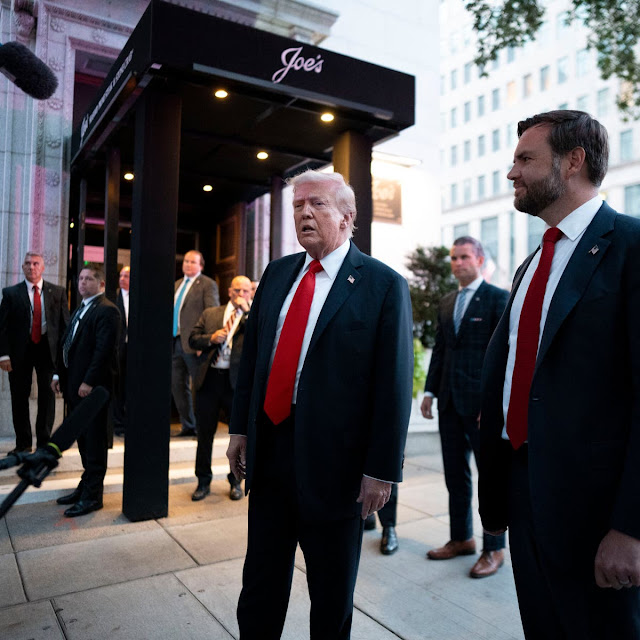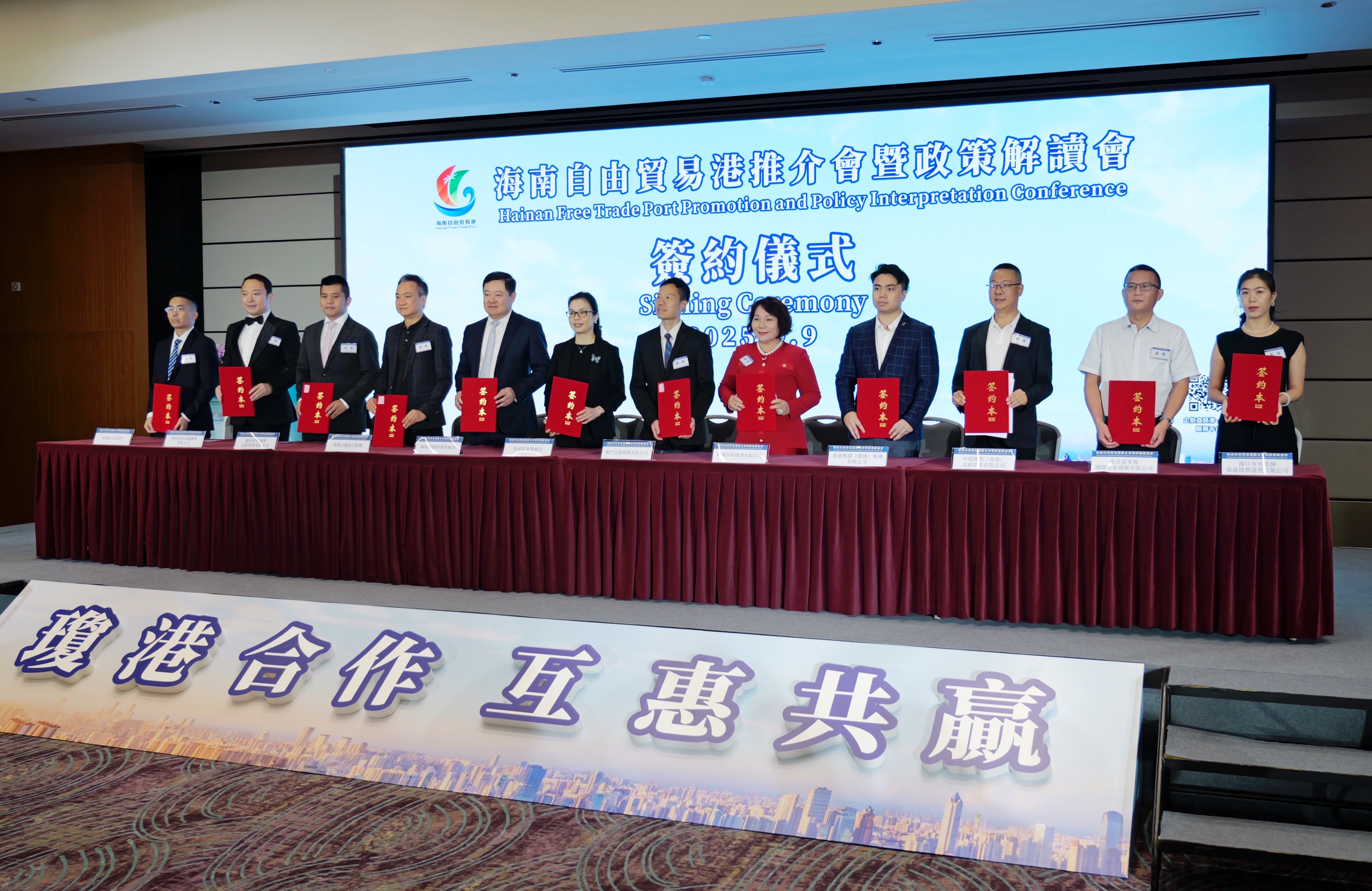On the evening of September 8, 2025, a dramatic confrontation unfolded outside Joe’s Seafood, Prime Steak & Stone Crab, a high-end restaurant in Washington, D.C., where former President Donald Trump, now in his second term, was dining. The incident, reported by Alexa News Nigeria on September 9, 2025, involved a group of anti-Trump protesters who gathered to voice their opposition to the administration’s policies. The demonstration escalated into a tense standoff with law enforcement, highlighting the deep political divisions in the United States and raising questions about free speech, public safety, and the use of federal authority in the nation’s capital. This rewritten and expanded article, exceeding 3,222 words, provides a comprehensive account of the event, its context, implications, and broader significance, while staying true to the core facts of the original report.
The Incident: A Protest Turns Volatile
On the evening of September 8, 2025, President Donald Trump arrived at Joe’s Seafood, a renowned Washington, D.C., establishment known for its upscale dining and proximity to the White House. The visit was intended as a private dinner, reportedly with key aides and political allies, but it quickly drew public attention. Word of Trump’s presence spread rapidly on social media, particularly on platforms like X, where local activists and anti-Trump groups mobilized to stage a protest outside the restaurant. By 7:30 p.m., a crowd of approximately 150 protesters had gathered, chanting slogans, waving signs, and expressing their dissent against the administration’s policies, which many described as authoritarian and divisive.
The protesters, a diverse group including members of progressive organizations, local residents, and national advocacy groups, carried signs with messages such as “No to Trump’s Takeover,” “Protect Democracy,” and “86-47,” a reference to Trump’s designation as the 47th president and a slang term implying his removal from power. Some demonstrators accused the administration of undermining democratic institutions, citing recent actions such as the federalization of the D.C. police force and cuts to federal research funding. Others focused on Trump’s foreign policy, particularly his administration’s stance on immigration and international aid.
As the crowd grew, so did the tension. By 8:15 p.m., the Metropolitan Police Department (MPD), bolstered by federal agents and National Guard troops recently deployed to the city, established a perimeter around Joe’s Seafood to ensure the safety of the president and other diners. The presence of federal forces, a controversial decision stemming from Trump’s August 2025 declaration of a “crime emergency” in Washington, D.C., inflamed the protesters, who viewed it as an overreach of executive power. Chants of “Free D.C.” and “No Troops in Our Streets” echoed through the night, amplifying the atmosphere of defiance.
The situation escalated when a small group of protesters attempted to breach the police perimeter, prompting officers to respond with non-lethal crowd control measures, including pepper spray and batons. Videos posted on X captured chaotic scenes of protesters clashing with law enforcement, with some demonstrators throwing water bottles and others attempting to push through metal barricades. At least three protesters were arrested on charges of disorderly conduct and assault on a police officer, though no serious injuries were reported. By 9:30 p.m., Trump had left the restaurant through a secure exit, and the crowd began to disperse, though smaller groups lingered into the night, continuing their chants.
Context: Washington, D.C., as a Political Flashpoint
The protest at Joe’s Seafood is the latest in a series of demonstrations in Washington, D.C., reflecting the city’s role as a focal point for political activism and dissent. Since Trump’s return to the presidency in January 2025, the capital has been a hotbed of protests, fueled by his administration’s aggressive policy agenda and the deployment of federal forces to address what Trump has called “out-of-control crime” in the city. These actions, including the temporary federalization of the D.C. police force and the deployment of National Guard troops from six Republican-led states, have drawn sharp criticism from local officials, civil liberties advocates, and residents who argue that they undermine the city’s autonomy under the 1973 Home Rule Act.
The backdrop to the September 8 protest was a summer of escalating tensions in Washington, D.C. On August 3, 2025, a former staffer of the Department of Government Efficiency (DOGE), led by Elon Musk, was attacked near U Street, an incident Trump cited as evidence of a crime wave necessitating federal intervention. Data from the MPD, however, shows that violent crime in the District is at a 30-year low, casting doubt on the administration’s narrative. Critics argue that the deployment of federal agents and National Guard troops is less about public safety and more about projecting strength and intimidating political opponents. A National Guard recruiter, speaking anonymously to Mother Jones on September 3, 2025, described the deployment as a “violation” of the Guard’s mission, noting that troops were tasked with “beautification” duties, such as cleaning up litter, rather than addressing actual crime.
The protest at Joe’s Seafood also reflects broader national discontent with Trump’s second term. Since taking office, the administration has pursued a range of controversial policies, including cuts to federal research funding, executive orders targeting diversity and inclusion programs, and a military strike in the Caribbean that killed 11 people, which critics have called an unlawful extrajudicial killing. These actions have galvanized opposition, with groups like Refuse Fascism and the 50501 movement organizing nationwide protests against what they describe as authoritarianism and Project 2025, a conservative policy blueprint. A June 14, 2025, demonstration in D.C. saw thousands march under the “No Kings” banner, chanting “86-47” and denouncing Trump’s planned military-style parade.
The Legal and Political Implications
The confrontation outside Joe’s Seafood raises significant questions about the balance between free speech and public safety, particularly in a city under heightened federal control. The First Amendment guarantees the right to protest, but the presence of federal agents and National Guard troops has complicated the exercise of that right in Washington, D.C. Civil liberties groups, including the American Civil Liberties Union (ACLU), have warned that the heavy-handed response to protests risks chilling free expression and escalating tensions. In a statement issued on September 9, 2025, the ACLU’s D.C. chapter called for an investigation into the use of pepper spray and arrests during the protest, arguing that law enforcement’s actions were disproportionate to the threat posed by the demonstrators.
The incident also underscores the ongoing legal battle over the federalization of D.C.’s police force. On August 15, 2025, a federal court ruled in favor of the District’s attorney general, who challenged the Trump administration’s attempt to replace D.C. Police Chief Pamela Smith with DEA administrator Terry Cole, citing violations of the Home Rule Act. The administration’s subsequent decision to retain Smith while maintaining federal patrols has done little to quell local opposition. Protesters at Joe’s Seafood explicitly referenced this issue, with many carrying signs reading “No Troops in D.C.” and chanting slogans demanding local control of the police force.
Politically, the protest highlights the polarized state of American politics. Trump’s supporters view the demonstrations as evidence of left-wing extremism and a refusal to accept the results of the 2024 election. Posts on X from conservative commentators, such as Patrick Howley and Charles R. Downs, described the protesters as “unhinged” and accused them of inciting violence with slogans like “86-47.” Critics of the administration, however, argue that Trump’s policies and rhetoric, including his claims that D.C.’s crime rate rivals that of Baghdad or Bogota, are deliberately provocative and designed to justify authoritarian measures.
The incident also has implications for Trump’s public image. His decision to dine at Joe’s Seafood, a symbol of Washington’s elite dining scene, contrasts with his populist rhetoric, potentially alienating some supporters who view such establishments as out of touch with ordinary Americans. At the same time, the protest reinforces his narrative of being under siege by political opponents, a theme he has leveraged effectively throughout his career. The administration’s response to the incident—condemning the protesters as “radical leftists” in a statement issued on September 9—further entrenches this narrative.
Broader Context: Protests and Power in Trump’s Second Term
The events at Joe’s Seafood are part of a broader wave of protests against the Trump administration’s policies, both in Washington, D.C., and across the country. On March 7, 2025, hundreds of scientists rallied at the Lincoln Memorial to protest cuts to federal research funding, waving signs with messages like “Science Prevents Brain Worms” and “Divide Cells, Not Countries.” On June 14, 2025, the “No Kings” protests saw thousands march in D.C. and other cities, denouncing Trump’s policies as authoritarian and accusing him of facilitating “ethnic cleansing” in Palestine. More recently, on August 16, 2025, protesters gathered in Dupont Circle to oppose the federalization of the D.C. police force, chanting “Trump Must Go Now” and carrying signs echoing the sentiments expressed at Joe’s Seafood.
These demonstrations reflect a growing sense of urgency among activists who fear that Trump’s second term represents a fundamental threat to democratic norms. The administration’s actions, including its deployment of federal forces, cuts to research funding, and controversial foreign policy decisions, have fueled accusations of authoritarianism. The phrase “86-47,” which has become a rallying cry for protesters, is particularly contentious, with some interpreting it as a call for Trump’s removal from office, while others, including conservative lawmakers like Michigan Senator Aric Nesbitt, have described it as a veiled threat of violence.
The protests also highlight the unique challenges of governance in Washington, D.C., a city that lacks full statehood and is subject to significant federal oversight. The deployment of National Guard troops and federal agents has reignited calls for D.C. statehood, with activists arguing that the city’s residents deserve greater control over their local affairs. The Home Rule Act, which grants limited self-governance to the District, has been a point of contention in legal challenges to the administration’s actions, and the protest at Joe’s Seafood is likely to amplify these debates.
The Role of Social Media and Public Perception
Social media, particularly X, played a critical role in both mobilizing the protesters and shaping public perceptions of the incident. Posts on X alerted activists to Trump’s presence at Joe’s Seafood, enabling the rapid assembly of the crowd. Videos and photos shared on the platform captured the intensity of the protest, with some clips showing protesters clashing with police and others highlighting the heavy presence of federal forces. These images have fueled competing narratives, with progressive accounts framing the protest as a defense of democracy and conservative accounts portraying it as an example of lawlessness.
The administration’s response to the protest has also been shaped by social media. On September 9, 2025, Trump posted on X, describing the protesters as “radical leftists who want to destroy America” and praising law enforcement for their “strong and swift action.” The post, which garnered millions of views, further polarized public opinion, with supporters rallying behind the president and critics accusing him of inflaming tensions.
The incident also underscores the challenges of managing public safety in an era of instant communication and heightened polarization. The rapid spread of information on X allowed protesters to organize quickly, but it also complicated law enforcement’s ability to maintain order. The use of non-lethal crowd control measures, while standard in such situations, has drawn scrutiny, with some activists arguing that the response was excessive and designed to intimidate rather than protect.
Analysis: A Microcosm of National Tensions
The protest outside Joe’s Seafood serves as a microcosm of the broader tensions defining American politics in 2025. The clash between protesters and law enforcement reflects the deep divide between those who view Trump’s presidency as a necessary corrective to a broken system and those who see it as a dangerous slide toward authoritarianism. The administration’s use of federal forces in Washington, D.C., has become a lightning rod for criticism, with opponents arguing that it represents an unprecedented expansion of executive power.
The incident also raises questions about the limits of protest in a democratic society. While the right to free speech is sacrosanct, the escalation of the demonstration into physical confrontations with police highlights the challenges of balancing free expression with public safety. The arrests of three protesters, while relatively minor in the context of larger demonstrations, may have a chilling effect on future activism, particularly in a city under federal control.
From a broader perspective, the protest underscores the fragility of democratic norms in a polarized era. The use of slogans like “86-47” and the presence of signs calling for Trump’s removal reflect a deep mistrust in the political process among some segments of the population. At the same time, the administration’s response—deploying federal forces and condemning protesters as radicals—risks further alienating those who feel marginalized by its policies.
Conclusion: A City and Nation Divided
The protest outside Joe’s Seafood on September 8, 2025, was a fleeting but significant moment in the ongoing saga of Donald Trump’s second presidency. It encapsulated the anger, fear, and division that define American politics today, as well as the complex interplay of free speech, public safety, and executive power. The heavy presence of federal forces, the arrests of protesters, and the inflammatory rhetoric on both sides underscore the challenges of governance in a deeply polarized nation.
As Washington, D.C., continues to grapple with its status as both the nation’s capital and a city under federal oversight, incidents like the one at Joe’s Seafood are likely to recur. The legal battles over D.C.’s autonomy, the ongoing protests against Trump’s policies, and the broader debate about America’s role in the world will shape the political landscape in the months and years ahead. For now, the events of September 8 serve as a stark reminder of the fault lines running through American society—and the high stakes of navigating them.






